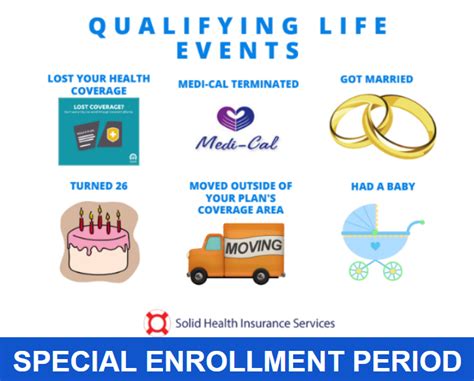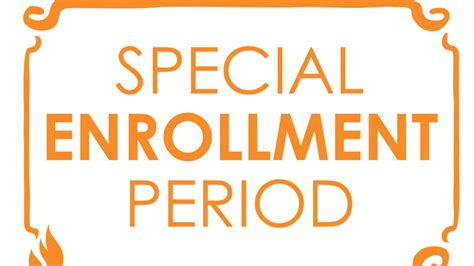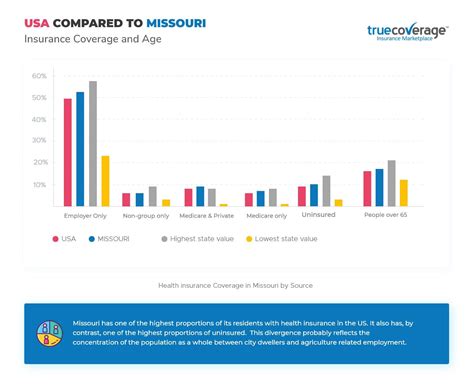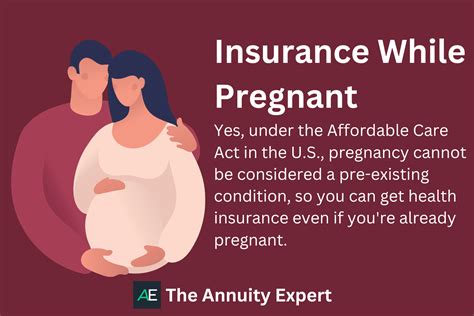Special Enrollment Period Health Insurance

The Special Enrollment Period (SEP) for health insurance is a crucial aspect of the healthcare system that offers a window of opportunity for individuals to enroll in health coverage outside of the standard Open Enrollment Period. This feature is particularly vital for those who miss the initial enrollment window or experience specific life events that impact their insurance needs.
In this article, we delve into the intricacies of the Special Enrollment Period, exploring its purpose, eligibility criteria, and the steps individuals need to take to ensure a smooth enrollment process. By understanding the nuances of this period, individuals can make informed decisions about their healthcare coverage and access the benefits they require.
Understanding the Special Enrollment Period

The Special Enrollment Period is a designated timeframe during which individuals can enroll in health insurance plans, even if they missed the annual Open Enrollment Period, which typically occurs in the fall. This period is designed to accommodate life events that can impact an individual’s insurance needs, such as marriage, divorce, birth or adoption of a child, loss of job-based coverage, or changes in income.
The SEP provides a critical safety net for individuals who may find themselves without coverage due to unforeseen circumstances. It ensures that people have access to healthcare services when they need them most, preventing gaps in coverage that could lead to financial strain or compromised health.
Eligibility and Qualifying Life Events
Not everyone is eligible for a Special Enrollment Period. The eligibility criteria are tied to specific qualifying life events, which are significant changes in an individual’s life that impact their insurance needs. These events can include:
- Marriage: Getting married often means that both partners need to combine their insurance plans or adjust their coverage to accommodate a new family unit.
- Divorce: Conversely, divorce can lead to the loss of coverage through a spouse's plan, requiring the individual to seek new insurance options.
- Birth or Adoption: The arrival of a new family member often triggers the need for additional insurance coverage to ensure the child's healthcare needs are met.
- Loss of Job-Based Coverage: If an individual loses their job, they may also lose their employer-provided health insurance. In such cases, an SEP can help them find an alternative plan.
- Changes in Income: Significant changes in income can impact an individual's eligibility for certain insurance plans or subsidies. An SEP allows them to adjust their coverage accordingly.
It's important to note that not all life events qualify for an SEP. For example, a change in address within the same state or a change in plan preferences generally do not meet the criteria. The focus is on events that disrupt an individual's insurance coverage or eligibility.
The Enrollment Process During an SEP

The process of enrolling during a Special Enrollment Period is similar to the standard Open Enrollment Period, but there are some key differences to be aware of.
Steps to Enroll
- Identify Your Qualifying Event: The first step is to determine if you’ve experienced a qualifying life event. Review the list of qualifying events and ensure that your situation meets the criteria.
- Determine Your Eligibility: Not all life events automatically qualify for an SEP. Some events, like a change in address, may only qualify under certain circumstances. It’s crucial to understand your eligibility before proceeding.
- Choose Your Plan: Once you’re eligible, you can start comparing health insurance plans. Consider factors like coverage, cost, and network of providers to find the plan that best suits your needs.
- Complete the Application: Similar to the Open Enrollment Period, you’ll need to provide personal and household information, as well as income details if you’re applying for coverage through the Health Insurance Marketplace. Be prepared to supply supporting documentation for your qualifying event.
- Submit Your Application: After completing the application, submit it through the official enrollment platform. This could be the Health Insurance Marketplace website or your state’s insurance exchange, depending on where you live.
Timing and Deadlines
Unlike the Open Enrollment Period, which has a set timeframe, the Special Enrollment Period is event-driven. This means that the timeframe for enrollment begins on the date of your qualifying event and typically lasts for 60 days.
For example, if you get married on January 15th, you'll have until March 15th to enroll in a new health insurance plan through an SEP. If you miss this deadline, you'll have to wait until the next Open Enrollment Period to make changes to your coverage.
It's crucial to act promptly when you experience a qualifying event to ensure you don't miss out on the opportunity to enroll during your SEP.
Special Considerations and Challenges
While the Special Enrollment Period is a valuable tool for individuals facing unexpected changes, it’s not without its challenges.
Limited Timeframe
The 60-day enrollment window can be a challenge for those who are unaware of the SEP or who face administrative hurdles in gathering the necessary documentation. It’s important to stay informed and act swiftly to avoid missing the deadline.
Documentation Requirements
To prove your eligibility for an SEP, you’ll need to provide documentation related to your qualifying event. This could include marriage certificates, divorce decrees, birth or adoption certificates, or proof of termination from employment. Gathering and submitting these documents can add an extra layer of complexity to the enrollment process.
Plan Comparison and Selection
With the pressure of a limited timeframe, individuals may feel rushed to make a decision about their insurance plan. It’s crucial to take the time to understand the differences between plans, including their coverage, out-of-pocket costs, and network of providers. Making an informed choice can help ensure you get the coverage you need without paying for unnecessary benefits.
Future Implications and Policy Considerations
The Special Enrollment Period is a critical component of the healthcare system, ensuring that individuals have access to healthcare coverage when they need it most. However, there are ongoing discussions and policy considerations that aim to improve and expand the SEP to better serve the needs of the population.
Expanding Access to Care
One of the primary goals of healthcare policy is to increase access to quality healthcare for all individuals. The SEP plays a vital role in achieving this goal by providing a pathway for individuals to enroll in health insurance plans outside of the standard Open Enrollment Period. By expanding the types of qualifying events or extending the enrollment window, policymakers can further enhance access to care.
Addressing Health Disparities
Health disparities, which are differences in the quality of healthcare experienced by different populations, are a significant concern in the healthcare system. The SEP can help address these disparities by ensuring that individuals from diverse backgrounds have the opportunity to obtain health insurance coverage. However, there are ongoing efforts to improve the SEP’s effectiveness in reaching underserved populations, such as those with limited English proficiency or those who live in rural areas.
Simplifying the Enrollment Process
The enrollment process during an SEP can be complex, especially for individuals who are unfamiliar with the healthcare system or who face language or technological barriers. Simplifying the application process and improving outreach efforts can make it easier for more people to access the benefits of the SEP. This could involve streamlining the documentation requirements or providing more personalized guidance during the enrollment process.
| SEP Qualification | Timeframe |
|---|---|
| Marriage | 60 days from the date of marriage |
| Divorce | 60 days from the date of divorce |
| Birth or Adoption | 60 days from the date of the event |
| Loss of Job-Based Coverage | 60 days from the date of coverage loss |
| Change in Income | 60 days from the date of the income change |

Can I enroll in an SEP if I missed the Open Enrollment Period due to a lack of awareness?
+Unfortunately, a lack of awareness about the Open Enrollment Period does not qualify as a valid reason for an SEP. However, if you experience a qualifying life event during the year, you can use that event to initiate your SEP.
What happens if I miss my Special Enrollment Period deadline?
+If you miss your SEP deadline, you’ll typically have to wait until the next Open Enrollment Period to make changes to your coverage. It’s important to act promptly to ensure you don’t miss out on your opportunity to enroll.
Are there any other ways to obtain health insurance outside of the Open Enrollment Period and SEPs?
+Yes, in some cases, individuals may qualify for a Medicaid enrollment, which does not have a specific enrollment period. Additionally, certain employer-based plans may offer enrollment opportunities throughout the year. It’s best to consult with a healthcare professional or insurance expert to understand your options.



